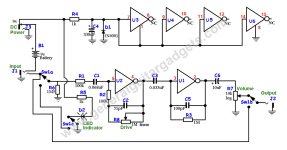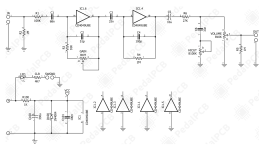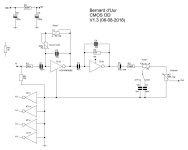john kurzweg
New member
Ive just finished an Ample Alpaca , compared it to and old ggg red llama and an ehx hotwax and it seems to have more gain than both of those---still pretty dirty with the gain knob all the way down.
It also has more sub lows than my llama....
Im wondering if there are any component mods etc that can tame the gain and the low end just a bit...?
And...... should i have used a reverse pot for the tone control? -- it's working backward from expected...
Any help/suggestions are much appreciated!
I should mention this is my first successful build that's not from a kit .... i gave up on it a year ago when i was building 3 non-kit pedals and none of them worked when i "finished" them...(!) -- I decided to pick the A.A. up again in the last few days (the alpaca was the simplest) and some troubleshooting paid off.....yay! (I'm a complete noobe, so I have to give myself some cheerleading..... )
It also has more sub lows than my llama....
Im wondering if there are any component mods etc that can tame the gain and the low end just a bit...?
And...... should i have used a reverse pot for the tone control? -- it's working backward from expected...
Any help/suggestions are much appreciated!
I should mention this is my first successful build that's not from a kit .... i gave up on it a year ago when i was building 3 non-kit pedals and none of them worked when i "finished" them...(!) -- I decided to pick the A.A. up again in the last few days (the alpaca was the simplest) and some troubleshooting paid off.....yay! (I'm a complete noobe, so I have to give myself some cheerleading..... )




